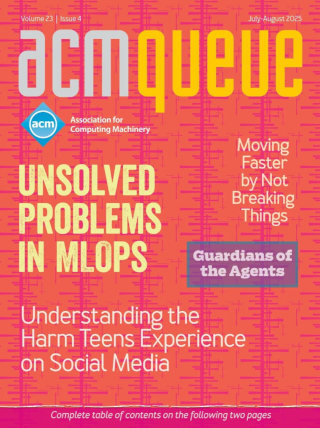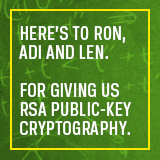
API: Design Matters:
Why changing APIs might become a criminal offense.
After more than 25 years as a software engineer, I still find myself underestimating the time it will take to complete a particular programming task. Sometimes, the resulting schedule slip is caused by my own shortcomings: as I dig into a problem, I simply discover that it is a lot harder than I initially thought, so the problem takes longer to solve—such is life as a programmer. Just as often I know exactly what I want to achieve and how to achieve it, but it still takes far longer than anticipated. When that happens, it is usually because I am struggling with an API that seems to do its level best to throw rocks in my path and make my life difficult. What I find telling is that, after 25 years of progress in software engineering, this still happens. Worse, recent APIs implemented in modern programming languages make the same mistakes as their two-decade-old counterparts written in C. There seems to be something elusive about API design that, despite many years of progress, we have yet to master.
The Seven Deadly Sins of Linux Security:
Avoid these common security risks like the devil.
The problem with security advice is that there is too much of it and that those responsible for security certainly have too little time to implement all of it. The challenge is to determine what the biggest risks are and to worry about those first and about others as time permits. Presented here are the seven common problems - the seven deadly sins of security - most likely to allow major damage to occur to your system or bank account. If any of these are a problem on any of your systems, you will want to take care of them immediately.
Toward a Commodity Enterprise Middleware:
Can AMQP enable a new era in messaging middleware? A look inside standards-based messaging with AMQP
AMQP was born out of my own experience and frustrations in developing front- and back-office processing systems at investment banks. It seemed to me that we were living in integration Groundhog Day - the same problems of connecting systems together would crop up with depressing regularity. Each time the same discussions about which products to use would happen, and each time the architecture of some system would be curtailed to allow for the fact that the chosen middleware was reassuringly expensive. From 1996 through to 2003 I was waiting for the solution to this obvious requirement to materialize as a standard, and thereby become a commodity. But that failed to happen, and I grew tired of waiting.
A Conversation with Michael Stonebraker and Margo Seltzer:
Relating to databases
Over the past 30 years Michael Stonebraker has left an indelible mark on the database technology world. Stonebraker’s legacy began with Ingres, an early relational database initially developed in the 1970s at UC Berkeley, where he taught for 25 years. The Ingres technology lives on today in both the Ingres Corporation’s commercial products and the open source PostgreSQL software. A prolific entrepreneur, Stonebraker also started successful companies focused on the federated database and stream-processing markets. He was elected to the National Academy of Engineering in 1998 and currently is adjunct professor of computer science at MIT. Interviewing Stonebraker is Margo Seltzer, one of the founders of Sleepycat Software, makers of Berkeley DB, a popular embedded database engine now owned by Oracle. Seltzer now spends most of her time teaching and doing research at Harvard, where she is full professor of computer science. She was kind enough to lend us her time and travel down the Charles River to speak with Stonebraker, her former Ph.D. advisor, at MIT’s striking Stata Center.
Corba: Gone but (Hopefully) Not Forgotten:
There is no magic and the lessons of the past apply just as well today.
Back in the June 2006 issue of Queue, Michi Henning wrote a very good condensed history of CORBA and discussed how some of its technical limitations contributed to its downfall. While those limitations certainly aided CORBA’s demise, there is a very widespread notion that the ultimate cause was the ascendance of Web Services, a notion that is compounded with the further belief that Web Services’ dominance of the distributed computing landscape is indicative of its technical superiority to the systems that preceded it, such as CORBA and DCOM.
Embracing Wired Networks:
Even at home, hardwiring is the way to go.
Most people I know run wireless networks in their homes. Not me. I hardwired my home and leave the Wi-Fi turned off. My feeling is to do it once, do it right, and then forget about it. I want a low-cost network infrastructure with guaranteed availability, bandwidth, and security. If these attributes are important to you, Wi-Fi alone is probably not going to cut it. People see hardwiring as part of a home remodeling project and, consequently, a big headache. They want convenience. They purchase a wireless router, usually leave all the default settings in place, hook it up next to the DSL or cable modem, and off they go. Ease and convenience are the selling points, but there are certainly tradeoffs to consider. As the IT expert of last resort for family, friends, and sometimes their family and friends, here are some of my experiences with Wi-Fi in the home.
Getting Bigger Reach Through Speech:
Developers have a chance to significantly expand the appeal and reach of their applications by voice-enabling their applications, but is that going to be enough?
Mark Ericson, vice president of product strategy for BlueNote Networks argues that in order to take advantage of new voice technologies you have to have a plan for integrating that capability directly into the applications that drive your existing business processes.
KV the Loudmouth:
A koder with attitude, KV answers your questions. Miss Manners he ain’t.
What requirement is being satisfied by having Unclear build a P2P file-sharing system? Based upon the answer, it may be more effective, and perhaps even more secure, to use an existing open source project or purchase commercial software to address the business need.
Managing Collaboration:
Jeff Johnstone of TechExcel explains why there is a need for a new approach to application lifecycle management that better reflects the business requirements and challenges facing development teams.
I think that fundamentally development is thought of, has become more of a business process than simply a set of tools. In the past, like you said, developers and development organizations were kind of on their own. They were fairly autonomous and they would do things that were appropriate for each piece of the process and they would adopt technologies that were appropriate at a technology and tool level, but they didn’t really think of themselves as an integral part of any higher business process.
The Yin and Yang of Software Development:
How infrastructure elements allow development teams to increase productivity without restricting creativity
The C/C++ Solution Manager at Parasoft explains how infrastructure elements allow development teams to increase productivity without restricting creativity.
Google Talk:
Although Google remains relatively mum about its ambitions in the area of speech recognition, Mike Cohen, head of the company’s efforts in this area and a co-founder of Nuance Communications, says that speech recognition will increasingly play a bigger role in all Web-based applications going forward.
Although Google remains relatively mum about its ambitions in the area of speech recognition, Mike Cohen, head of the company’s efforts in this area and a co-founder of Nuance Communications, says that speech recognition will increasingly play a bigger role in all Web-based applications going forward. But for developers to be successful in this space, they will need to get in touch with their inner persons more than ever if they hope to create applications that ordinary people will actually use.
SOA Testing:
Wayne Ariola of Parasoft on best practices for building SOA applications
As developers move to build applications that span service-oriented architectures, many of them underestimate the testing challenges associated with building and maintaining applications that can comprise hundreds of different Web services. Developers need a robust set of testing tools and a systematic approach to testing to prevent errors from being introduced or, worse yet, propagated throughout the system. Wayne Ariola, vice president of corporate development for Parasoft, in a conversation with Queuecast host Mike Vizard, highlights some of the more common miscues associated with SOA and discusses best practices for building SOA applications.
Alloneword:
Errors, deceptions, and abmiguity
Three years ago, to the very tick, my first Curmudgeon column appeared in ACM Queue to the rapturous, one-handed claps of the silent majority. Since then my essays have alternated intermittently with those of other grumpy contributors. With this issue (muffled drumroll), I’m proud to announce a Gore-like climate change in the regime that will redefine the shallow roots of ACJ (agile computer journalism, of which more anon). The astute ACM Queue Management (yes, there is such - you really must read the opening pages of this magazine!) has offered me the chance to go solo. For the next few Queues, at least, I am crowned King Curmudgeon, the Idi Amin of Moaners, nay, Supreme General Secretary of the Complaining Party! "I am Sir Oracle, and when I ope my lips, let no dog bark!"



